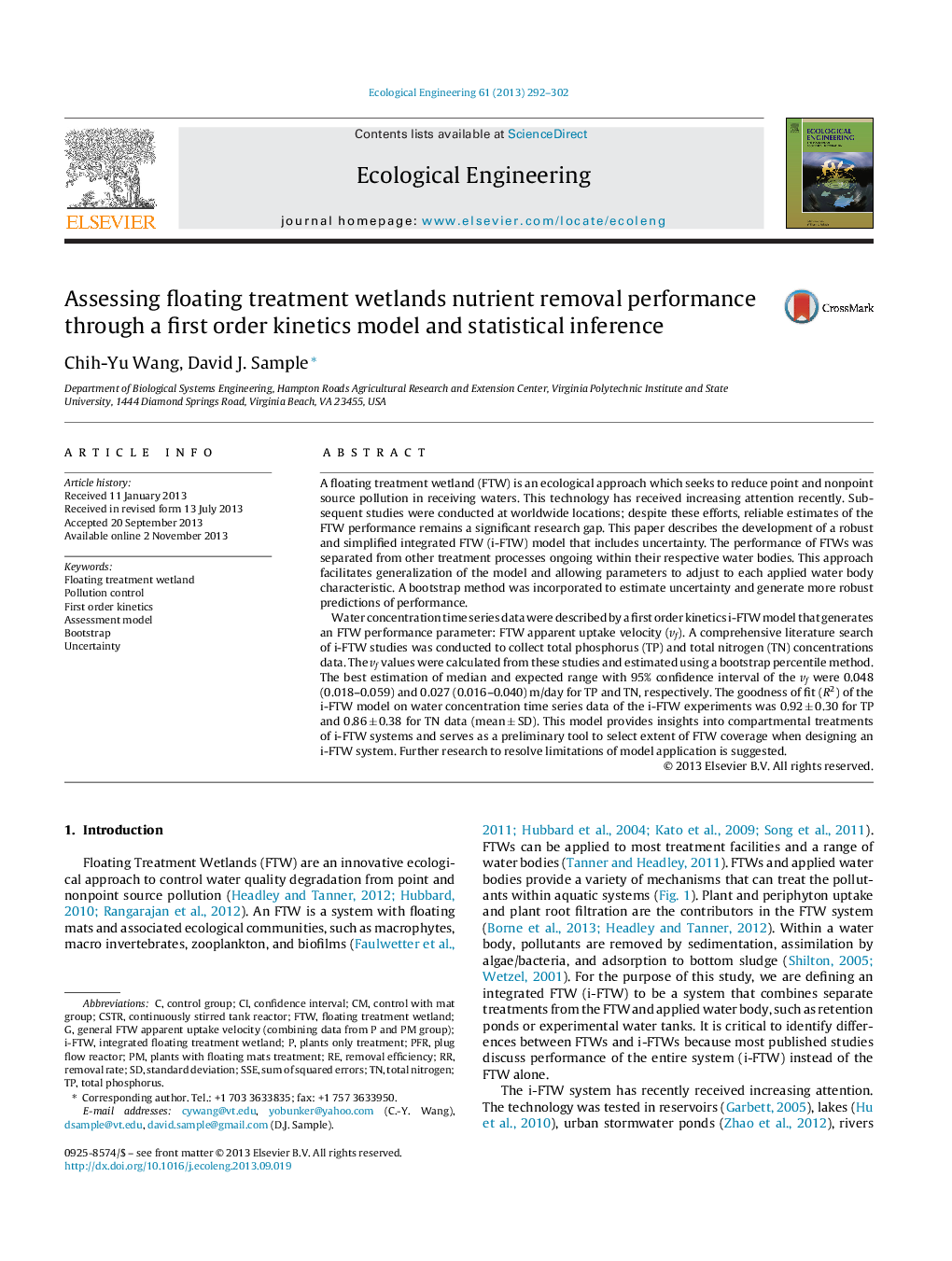| کد مقاله | کد نشریه | سال انتشار | مقاله انگلیسی | نسخه تمام متن |
|---|---|---|---|---|
| 4389491 | 1305129 | 2013 | 11 صفحه PDF | دانلود رایگان |

• Develops a unique model of integrated floating treatment wetland (i-FTW) systems.
• Model incorporates water body characteristics and FTW coverage to simulate i-FTWs.
• A bootstrap method is used to generate predictions and estimate uncertainty.
• First order kinetics is a simplified approach that adequately predicts performance.
• The model fits FTW literature data (2009–2012) well.
A floating treatment wetland (FTW) is an ecological approach which seeks to reduce point and nonpoint source pollution in receiving waters. This technology has received increasing attention recently. Subsequent studies were conducted at worldwide locations; despite these efforts, reliable estimates of the FTW performance remains a significant research gap. This paper describes the development of a robust and simplified integrated FTW (i-FTW) model that includes uncertainty. The performance of FTWs was separated from other treatment processes ongoing within their respective water bodies. This approach facilitates generalization of the model and allowing parameters to adjust to each applied water body characteristic. A bootstrap method was incorporated to estimate uncertainty and generate more robust predictions of performance.Water concentration time series data were described by a first order kinetics i-FTW model that generates an FTW performance parameter: FTW apparent uptake velocity (vf). A comprehensive literature search of i-FTW studies was conducted to collect total phosphorus (TP) and total nitrogen (TN) concentrations data. The vf values were calculated from these studies and estimated using a bootstrap percentile method. The best estimation of median and expected range with 95% confidence interval of the vf were 0.048 (0.018–0.059) and 0.027 (0.016–0.040) m/day for TP and TN, respectively. The goodness of fit (R2) of the i-FTW model on water concentration time series data of the i-FTW experiments was 0.92 ± 0.30 for TP and 0.86 ± 0.38 for TN data (mean ± SD). This model provides insights into compartmental treatments of i-FTW systems and serves as a preliminary tool to select extent of FTW coverage when designing an i-FTW system. Further research to resolve limitations of model application is suggested.
Journal: Ecological Engineering - Volume 61, Part A, December 2013, Pages 292–302